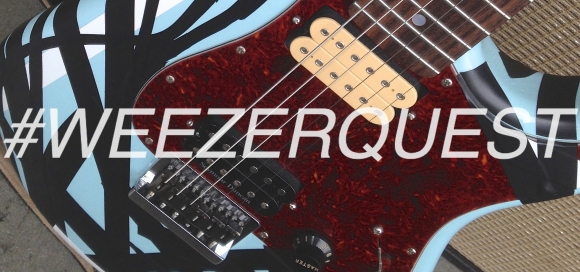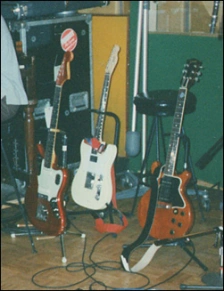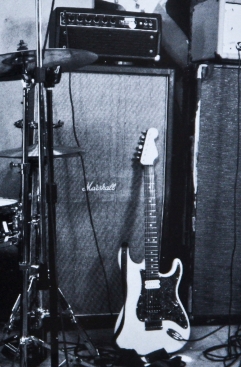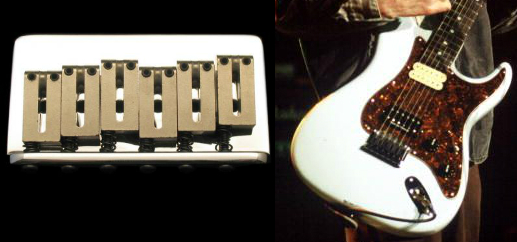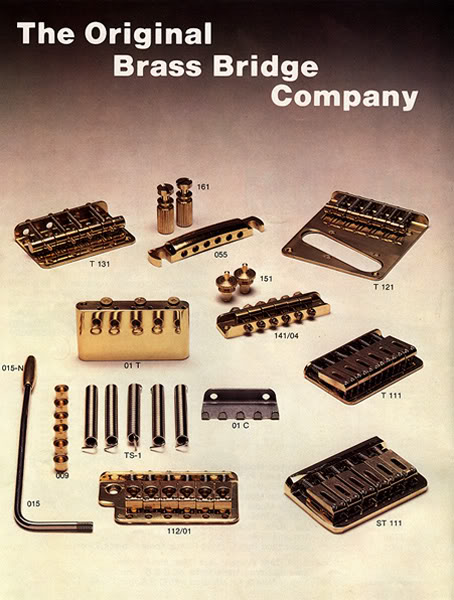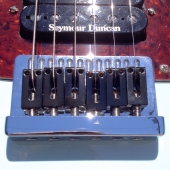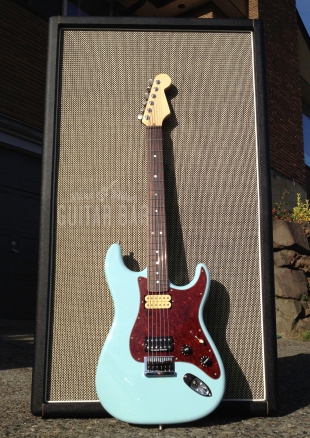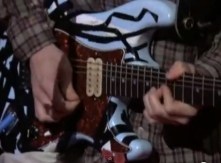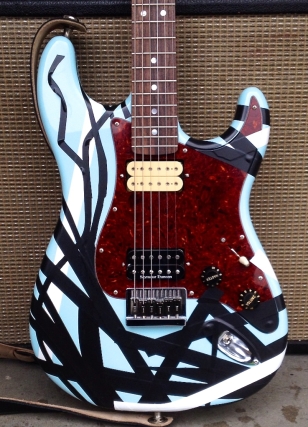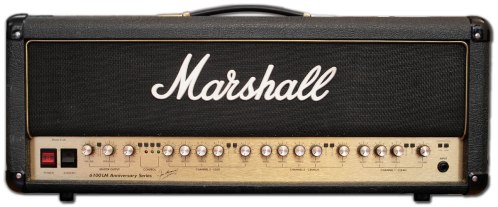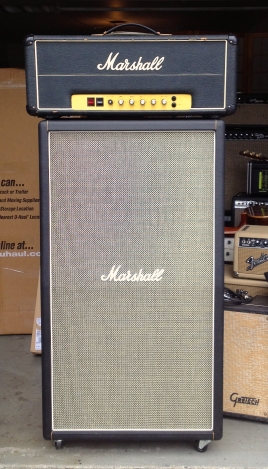Earlier this year, message boards and forums lit up with rumors of Fender’s 2017 American Pro series guitars, especially the Jazzmaster and Jaguar models in the range. Appearing to be a more affordable and streamlined alternative to the AVRI line, speculation ran wild as to what the series might offer. Me, I couldn’t wait.
 Fender began sending them out to musicians and social media stars late in the year (where’s the love?!) but kept quiet about specs. Much of what was known about the models was deduced by blowing up blurry Instagram photos and leaked catalogue pages. Excitement soared, and soon I was buried under requests for The Jazzmaster Guy’s take on the new models.
Fender began sending them out to musicians and social media stars late in the year (where’s the love?!) but kept quiet about specs. Much of what was known about the models was deduced by blowing up blurry Instagram photos and leaked catalogue pages. Excitement soared, and soon I was buried under requests for The Jazzmaster Guy’s take on the new models.
I’m happy to say I finally had the chance to take both guitars for a spin yesterday while Hollywood Guitar Center with my best friend Vanessa Wheeler of Leo Leo. With her help, I’d like to walk you through some of our thoughts and impressions of these new guitars. Are they any good? Worth the money? Fun to play? Read on and find out.
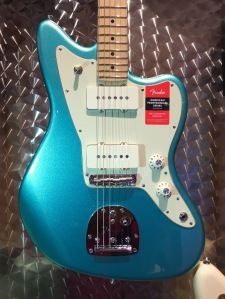
Mystic Seafoam is a win for both of us
Visuals
Fit and finish on these guitars is superb. In typical Fender Corona fashion, there wasn’t a cosmetic flaw to be found.
Let it be known far and wide that Mystic Seafoam may be the best color Fender have produced in years. No photo––not even mine––will do it justice. It demands attention, which is how we spotted it from across the room the moment we walked on the sales floor. So visually arresting is this color that we paid zero attention to any other instrument on the wall. I think I heard Vanessa mutter “Oh, wow!” under her breath.
I wish I could say the same for Sonic Grey. I was excited to see it in person ever since Jimmy Vivino posted his own grey Jazzmaster on Instagram, but it just didn’t do it for me. Vanessa pointed out that my reaction to the color might come down to the plastics: Mystic Seafoam is paired with parchment while Sonic Grey is clad in stark white, which lends a sort of harshness to the guitar’s visual palette. Of course, this is just me.
Also new for this series: glossy maple fretboards! While this isn’t a first for Fender, this uncommon feature hasn’t previously been offered as standard on offsets. The necks seemed pale in photos, but the wood has a much warmer hue in reality.
Feel
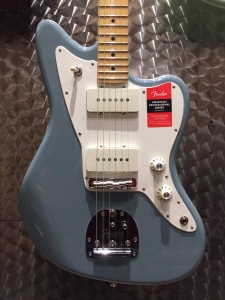
Sonic Grey. See, I’m looking at it now and I sort of like it??? Argh.
These guitars felt super solid from the first moment we took them off the wall. Vanessa found them a bit heavy, but that seems to be the norm with new guitars. Strummed acoustically, all models exhibited loud and pleasant tonalities, which usually translates to a good plugged-in sound.
Fender introduced the new “Deep C” neck profile with this series, which you’ll notice immediately when you pick one up. Vanessa, whose chord vocabulary is from another planet altogether, didn’t seem as encumbered by the extra girth as I was at first, but I got used to it quickly. It’s substantial but never crosses over into “boat neck” territory, starting out slightly chunky at the first fret and gradually fattening toward the 12th. Compared with AVRI62 necks of either model, this profile will definitely give you something more to hold on to.
While I firmly believed they would not be my thing, the extra height of the 22 “narrow-tall” frets made for easy bends and meant I rarely felt the fretboard under my fingertips. This is good, because I always seem to get stuck on gloss maple. While rosewood is an option for the range, currently Seafoam and Grey are only available with maple fretboards. In contrast, the lone white Jaguar on the wall was equipped with a rosewood fretboard.
The addition of the Micro-Tilt adjustment to the neck pocket is absolutely genius. Having an adjustable mechanical shim on an offset guitar will make setups a breeze. I never would have considered this!
Playability
No matter the brand, factory setups are often anything but; action high enough to mitigate buzz yet low enough to be playable. I have to say, the setups on these guitars were pretty decent! The Mystic Seafoam model wowed both of us with its easy action and tunefulness, while the Sonic Grey guitar left something to be desired but was passable. Fretwork seemed clean across all models.
Now for the heavy criticism: both E strings are unthinkably close to the fretboard edges on all three of the guitars we demoed, so close that it was nearly impossible to fret the high E string without slipping off the fretboard. This seems like something that should have been corrected during the R&D phase. Quite literally the first comment Vanessa made when she sat down with the guitar was how hard it was to play the Es, a sentiment I echoed.
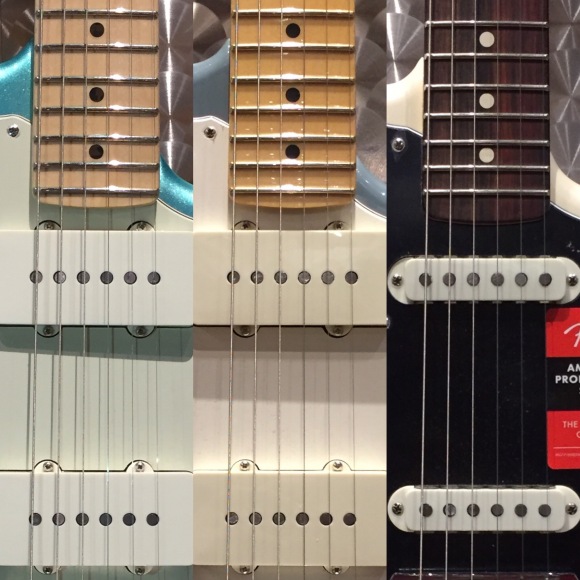
The extra width also means strings don’t line up with bridge pickup pole pieces.
Mustang-style bridges typically have wider string spacing, but this is extreme. Even with nylon bushings that improve bridge stability, I honestly think that changing the bridge is going to be an incredibly common if not required mod on these guitars. (NOTE: I wasn’t able to pull the bridge, so I’m not sure which thimble set they’ve installed on these guitars, which could be an added bridge-swapping headache like the Classic ’60s models.)
My only other major complaint is that the Jazzmaster’s pickup selector switch has been moved to an exceptionally inconvenient place, a place where many players already complain about a switch being there. How often do you see players tape off the rhythm circuit so it’s not accidentally engaged, after all. This move is truly perplexing.
Depending on play style, this could be a huge issue for certain players. If you do a lot of tapping, slapping, popping, and plucking like Vanessa, this switch is totally in the way.

Compare the toggle switch positions. L: 2017 Fender AM-PRO R: 2011 Squier VM
After adjusting her right hand technique, it still seemed uncomfortable. She opined, “If I owned this, I’d have to move the switch.”
Switch clearance may not be as crucial for power chord junkies like myself, but if I’m even a little more animated it becomes an issue for me too. Vigorous strummers, be forewarned.
This seems like a bit of a misstep when even the older Squier Vintage Modified hard tail models had the selector switch higher on the upper horn. Should you wish to move the switch back to the traditional placement, you’ll need to do some extra routing.
Sound
Describing the sound of the new V-Mod Jazzmaster pickups, Vanessa coined the term “magnety.” I can’t say I can come up with a better word for it. They’re hotter, fuller, and snappier than Fender’s more recent designs, and they have a special sort of attack to them that’s really nice.
They are also very bright. Brighter than I expected, and this from a Jazzmaster fanatic. Vanessa favors chimey tones yet found herself rolling off the tone control drastically before she was comfortable. In fact, when she finally handed it off to me I thought, “Oh wow, these are pretty dark pickups!” No, I just hadn’t noticed the tone knob was at 5.
We ran these guitars through a Fender Bassbreaker combo. While Vanessa compensated for the brightness by cranking up the bass on the first channel, I switched over to the second and turned the tone knob to 0. Once I did that, I’d have to say I rather liked them, but bright guitars into dark amps is kind of my thing.
What about the Jaguar? Honestly, neither of us cared for these pickups. They lacked any of the wiry treble or round bass of good Jag pickups, sounding quite honky and almost notched in the midrange. Granted there was only one at GC; I wish there were another to contrast and compare.
The factory-installed treble bleed was subtle yet functional on both models. As for the noise floor, these are single coils so some noise is expected. While the 60 cycle hum was definitely there, I wouldn’t say it was necessarily worse than any other Jazzmaster or Jaguar pickup on the market.
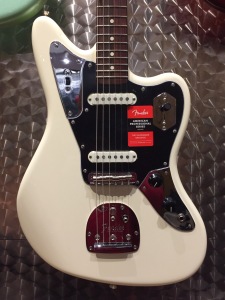
The American Pro Jaguar in Olympic White
The stripped-down simplicity of the control schemes ensure these Pro-series guitars will be immediately useful to players unfamiliar with the various rollers and switches. Both guitars have volume, tone, and pickup selector controls, which couldn’t be more straightforward. I was especially happy to see the 4-way Johnny Marr switching included on the Jaguar, which adds the versatility of a series position.
I definitely miss the “Strangle” switch on the Jaguar. Fender replaced the vintage-correct low-cut filter with an out-of-phase setting for the selector’s 2 and 4 positions. Not that I have anything against out-of-phase sounds, I just find a switch that works on all positions more useful than one that works on two. Both may only be situationally useful for most players (it got a shrug from Vanessa) so let’s call this a minor quibble.
Of course, as an avid Rhythm Circuit user, I’m sad at its omission but I’m also enough of a realist to know that not everybody uses the thing. The American Pro series isn’t meant to be a vintage reissue, so some play with the design is to be expected.
Assorted Minutiae For Which I Could Not Devise a Snappy Subheading
Both Jazzmasters had their knobs situated with 6 where 10 should have been, making sorting out preferred settings a bit of a hassle. Strangely, this also matches the Fender promotional photos. In my best Seinfeld I cry out, “What’s the deal?”
None of the three guitars we sampled had their vibrato arms installed, which is a shame because I wanted to find out how the new screw-in collet compared with the push-in variety. I’ve read that there’s play in the arm unless it’s screwed in all the way so that it doesn’t pivot at all, but I wasn’t able to confirm or deny such things here. As far as I could tell, the rest of the trem is the same as those found on AVRI reissues, so it should be stable and smooth enough.
I did strum a chord and pushed down on the vibrato with my index finger, and it seemed to hold tune just fine on both Jazzmasters. The Jag had tuning problems due to a poorly-cut nut, popping and pinging with every turn of the machines.
The Verdict
When I first heard rumblings of these fresh takes on my Fender favorites, I was really looking forward to trying them out. I like that Fender have something in their catalog that bridges the gap between the affordable import lines and the more expensive US vintage reissues, trading some traditional features to hit the $1499 price point. Simplifying the control scheme also helps these guitars appeal to the no-nonsense crowd.
Vanessa and I both agree that the Fender American Pro Jazzmaster and Jaguar are fundamentally good guitars, especially for the price. They felt and sounded great once dialed in, and most importantly, we had fun trying them out. We had some very minor complaints overall, but very little that would stop us from recommending them. The only possible deal breaker is the string spacing issue, but that could be easily corrected by swapping the bridge for a Mastery or Staytrem, which so many of us do already. Just like the impending new year, everything’s different but nothing is different at all.
Overall, these guitars are worth your time to check out, so grab one and see what you think. My critique notwithstanding, I still want to bag one for myself!
A big thank-you to Vanessa for offering some impressions on these new instruments. Follow her on Instagram, buy her music, see her live. She’s so good. Guitar shopping with friends, is there anything better?

